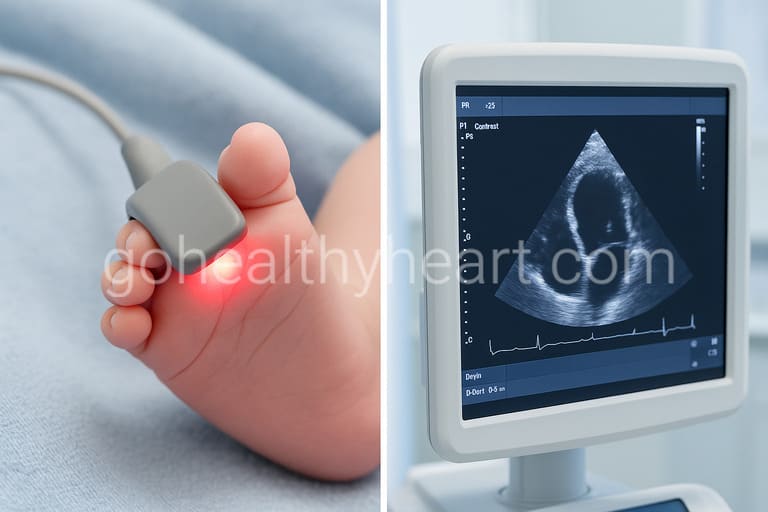Children With Heart Conditions PE: Parents’ Worst Fear?

As a pediatric cardiologist practicing in Vijayawada, I frequently encounter concerned parents asking whether their children with heart conditions PE participation is safe. The answer, in most cases, is a reassuring yes. With proper planning, monitoring, and individualized approaches, most children with heart conditions can actively participate in physical education while maintaining their safety and well-being.
Physical activity remains crucial for the overall development of all children, including those with cardiac conditions. However, managing school PE for these special children requires careful consideration, collaboration between healthcare providers and educators, and a deep understanding of each child’s unique medical needs.
Understanding Heart Conditions in School-Aged Children
Heart conditions in children encompass a wide spectrum of congenital and acquired cardiac disorders. Congenital heart disease affects approximately 8-10 per 1000 live births in India, making it one of the most common birth defects. These conditions range from simple septal defects that may close naturally to complex conditions requiring multiple surgeries.
When we discuss children with heart conditions PE participation, we must consider several factors. The severity of the condition, surgical history, current cardiac function, and associated complications all influence exercise capacity. Some children may have minimal restrictions, while others require carefully modified activities.
Understanding the child’s specific diagnosis helps educators make informed decisions about PE participation. For instance, a child with a successfully repaired ventricular septal defect may have no exercise limitations, whereas a child with hypoplastic left heart syndrome may require significant activity modifications.
Benefits of Physical Activity for Children with Heart Conditions
Contrary to outdated beliefs about restricting activity in cardiac children, modern pediatric cardiology emphasizes the importance of appropriate physical activity. Regular exercise improves cardiovascular fitness, enhances muscle strength, and promotes healthy bone development. For children with heart conditions PE activities provide additional psychological benefits including improved self-esteem, social integration, and reduced anxiety about their condition.
Research consistently demonstrates that supervised physical activity in children with heart conditions leads to improved exercise tolerance and quality of life. These children often develop better coping mechanisms and demonstrate increased confidence when they participate in age-appropriate activities alongside their peers.
The key lies in finding the right balance between safety and inclusion. Most children with stable heart conditions can participate in moderate-intensity activities without increased risk. However, this participation must be guided by comprehensive medical evaluation and ongoing monitoring.
Creating Individualized Health Care Plans
Every child with a heart condition attending school should have a comprehensive Individualized Health Care Plan (IHCP). This document serves as the foundation for safe PE participation and should be developed collaboratively between parents, healthcare providers, and school personnel.
The IHCP for children with heart conditions PE activities should clearly outline the child’s specific diagnosis, current medications, activity restrictions, and emergency protocols. It should specify which activities are permitted, which require modifications, and which should be avoided entirely. This plan becomes the roadmap for PE teachers to ensure safe participation.
Regular updates to the IHCP are essential, especially following cardiac procedures or changes in the child’s condition. As children grow and their cardiac status evolves, their exercise capabilities may change, requiring plan modifications. Annual reviews with the pediatric cardiologist help ensure the plan remains current and appropriate.
PE Adaptations and Modifications
Safe Activities for Most Children with Heart Conditions
Most children with stable heart conditions can participate in aerobic activities such as walking, light jogging, cycling, and swimming. These activities promote cardiovascular health while maintaining manageable intensity levels. Dancing, yoga, and recreational games also provide excellent options for inclusive PE participation.
Team sports may be appropriate for many children with heart conditions PE activities, depending on their specific diagnosis and functional capacity. Non-contact sports like volleyball, badminton, and track events often work well. The key is monitoring the child’s response and ensuring they can self-regulate their activity level.
Water-based activities deserve special mention as excellent options for cardiac children. Swimming provides low-impact cardiovascular exercise while being gentler on joints. However, proper supervision and emergency preparedness are crucial given the aquatic environment.
Activities Requiring Caution or Modification
Contact sports and high-intensity competitive activities may require careful evaluation for children with heart conditions PE participation. Children with certain conditions, particularly those on anticoagulation therapy or with enlarged hearts, may need to avoid collision sports to prevent injury.
Weightlifting and isometric exercises require special consideration. While light resistance training may be appropriate for some children, heavy lifting or activities involving breath-holding (Valsalva maneuver) may be restricted. The child’s cardiologist should provide specific guidelines based on their condition.
Activities with sudden bursts of high intensity, such as sprinting or competitive races, may need modification. These children might participate in modified versions where they can pace themselves or compete against personal goals rather than peers.
Recognizing Warning Signs During PE
Teachers and school staff must be trained to recognize signs that indicate a child with heart conditions PE activity should be stopped immediately. These warning signs include chest pain, excessive shortness of breath, dizziness, palpitations, or unusual fatigue.
Cyanosis (bluish discoloration of lips or fingernails) is a critical warning sign requiring immediate attention. Similarly, if a child complains of feeling faint or actually faints during activity, emergency protocols should be activated immediately.
It’s important to distinguish between normal exercise responses and concerning symptoms. While mild fatigue and increased breathing are expected during physical activity, persistent or severe symptoms warrant immediate cessation of activity and medical evaluation.
Post-Surgical Considerations
Children returning to PE after cardiac surgery require special attention and gradual activity progression. The typical recommendation involves avoiding arm-lifting activities for six weeks post-surgery to allow proper healing of the sternum. However, leg exercises and walking can usually resume much earlier.
The return to full children with heart conditions PE participation should follow the cardiologist’s specific timeline. This progression typically involves starting with light activities and gradually increasing intensity based on the child’s tolerance and healing progress. Some children may require modified activities for several months following complex procedures.
Communication between the surgical team, school nurses, and PE teachers is crucial during this transition period. Clear documentation of restrictions and progression milestones helps ensure safe return to activities while avoiding unnecessary limitations.
The Role of School Personnel
PE Teachers and Coaches
PE teachers play a crucial role in the successful integration of children with heart conditions PE programs. They need comprehensive training about cardiac conditions, warning signs, and emergency procedures. Understanding each child’s specific limitations and capabilities allows for appropriate activity modifications.
Creating an inclusive environment where cardiac children feel valued and included requires sensitivity and creativity. PE teachers should focus on the child’s abilities rather than limitations, providing alternative activities when necessary while maintaining the child’s dignity and participation.
Regular communication with parents and healthcare providers helps PE teachers stay informed about any changes in the child’s condition or activity recommendations. This ongoing dialogue ensures that PE adaptations remain appropriate and safe.
School Nurses
School nurses serve as the primary healthcare link within the educational setting. They should be familiar with each cardiac child’s medical history, medications, and emergency protocols. For children with heart conditions PE participation, nurses provide essential support and medical oversight.
The school nurse should be readily accessible during PE classes and equipped to handle cardiac emergencies. They often serve as the communication bridge between families, healthcare providers, and school staff, ensuring everyone has current information about the child’s status.
Technology and Monitoring Tools
Modern technology offers valuable tools for monitoring children with heart conditions PE activities. Heart rate monitors can provide real-time feedback about exercise intensity, helping children and teachers understand appropriate activity levels. However, these tools should supplement, not replace, careful clinical observation and the child’s self-assessment.
Some schools are beginning to use fitness tracking devices that can alert staff if a child’s heart rate exceeds predetermined limits. While these technologies show promise, they must be used judiciously and with proper medical guidance to avoid over-reliance on technology at the expense of clinical judgment.
Digital platforms also facilitate communication between healthcare providers and schools, allowing for rapid updates to care plans and quick consultation when questions arise about activity restrictions or modifications.
Psychological and Social Considerations
Building Confidence and Self-Esteem
Children with heart conditions PE participation significantly impacts their psychological development and social integration. When managed appropriately, PE activities help these children develop confidence in their physical abilities and reduce anxiety about their condition.
Overprotectiveness from parents or educators can inadvertently limit a child’s development and self-confidence. Striking the right balance between safety and independence helps children with heart conditions develop healthy relationships with physical activity that will benefit them throughout their lives.
Celebrating achievements and progress, no matter how small, helps build positive associations with physical activity. For children with heart conditions PE success might be measured differently than for other children, but the psychological benefits remain equally important.
Peer Integration and Inclusion
Social integration during PE classes significantly affects the overall school experience for children with cardiac conditions. Inclusive PE programs help reduce stigma and promote understanding among classmates. When children with heart conditions PE participation is normalized and celebrated, it creates a more accepting environment for all students.
Educating classmates about heart conditions in age-appropriate ways can reduce misconceptions and promote supportive peer relationships. However, this education should always be done with the child’s and family’s consent and in a way that respects privacy.
Buddy systems or peer support programs can enhance inclusion while providing additional safety monitoring. Training selected classmates to recognize warning signs and seek help when needed creates an additional layer of support during PE activities.
Emergency Preparedness and Protocols
Immediate Response Procedures
Schools must have clear, well-practiced emergency protocols for children with heart conditions PE complications. These protocols should outline immediate response steps, including when to call emergency services, how to position the child, and what information to provide to emergency responders.
All PE staff should be trained in basic life support and have regular refresher training. Automated External Defibrillators (AEDs) should be accessible in PE areas, and staff should be comfortable with their use. Time is critical in cardiac emergencies, making preparation and training essential.
The emergency protocol should include immediate notification of parents and the child’s cardiologist. Having current contact information and medical details readily available can be lifesaving in emergency situations.
Communication Systems
Effective communication systems ensure rapid response to emergencies involving children with heart conditions PE activities. This includes reliable methods to contact emergency services, parents, and healthcare providers. Some schools use emergency notification systems that can simultaneously alert multiple parties.
Documentation of any incidents or concerning symptoms helps healthcare providers adjust activity recommendations and care plans. Detailed incident reports provide valuable information for ongoing medical management and help identify patterns or triggers that might require attention.
Family Education and Support
Empowering Parents
Parents of children with heart conditions often struggle with anxiety about PE participation. Providing comprehensive education about their child’s condition, activity capabilities, and safety measures helps reduce this anxiety while promoting appropriate activity participation.
Regular communication between families and schools helps address concerns promptly and ensures everyone has current information about the child’s status. Parent education should include recognizing when their child is ready for increased activity participation and when additional medical evaluation might be needed.
Supporting parents in advocating for their child’s needs while promoting independence helps create the best outcomes. For children with heart conditions PE participation, parental support and confidence significantly influence the child’s own attitudes and success.
Sibling and Family Dynamics
Heart conditions affect entire families, not just the diagnosed child. Siblings may have concerns about their brother’s or sister’s participation in PE activities, and family dynamics can influence the child’s confidence and participation. Addressing these broader family considerations helps optimize outcomes for children with heart conditions PE involvement.
Family education should include age-appropriate information for siblings and strategies for supporting the entire family unit. When families understand the benefits and safety measures associated with PE participation, they become stronger advocates for their child’s inclusion and success.
Long-term Health Outcomes
Building Lifelong Healthy Habits
Positive experiences with children with heart conditions PE activities during school years often translate into lifelong healthy habits. Children who learn to enjoy appropriate physical activity are more likely to maintain active lifestyles as adults, which is particularly important for long-term cardiac health.
The goal extends beyond immediate safety to include fostering a positive relationship with physical activity that will benefit the child throughout their life. This long-term perspective influences how we approach PE adaptations and inclusion strategies.
Research demonstrates that adults with congenital heart disease who were active during childhood have better functional capacity and quality of life outcomes. This evidence reinforces the importance of appropriate PE participation during the school years.
Transition to Adult Care
As children with heart conditions grow and transition to adult care, their experiences with PE activities influence their future healthcare decisions and lifestyle choices. Positive school experiences help prepare them for adult discussions about exercise and activity limitations.
The communication skills and self-advocacy abilities developed through navigating PE accommodations serve these children well as they transition to adult healthcare providers. Learning to articulate their needs and limitations becomes an important life skill.
Collaboration Between Healthcare Providers and Schools
Effective Communication Strategies
Successful management of children with heart conditions PE participation requires ongoing collaboration between pediatric cardiologists and school personnel. Regular communication ensures that activity recommendations remain current and appropriate as children grow and their conditions evolve.
Healthcare providers should provide clear, practical guidance to school personnel, avoiding medical jargon while ensuring important safety information is communicated effectively. Written recommendations and periodic reviews help maintain consistency and safety.
Schools benefit from understanding the rationale behind activity restrictions and modifications. When educators understand the medical reasoning, they can make better decisions about situations not specifically covered in the care plan.
Professional Development and Training
Ongoing professional development for school personnel helps ensure they have current knowledge about managing children with heart conditions PE activities. Training programs should cover basic cardiac anatomy, common conditions, warning signs, and emergency procedures.
Collaboration with local pediatric cardiologists in developing these training programs ensures that content is accurate, current, and relevant to the school setting. Regular updates help incorporate new research findings and treatment approaches.
Frequently Asked Questions
Most children with pacemakers can participate in PE activities with appropriate modifications. Contact sports and activities with risk of direct impact to the device area typically require restriction. Swimming and most aerobic activities are generally safe, but each child’s situation requires individual evaluation by their cardiologist.
Warning signs of overexertion in children with heart conditions PE activities include excessive shortness of breath compared to peers, chest pain, dizziness, palpitations, or unusual fatigue. Children should be taught to self-monitor and report any concerning symptoms immediately.
If a child faints during PE, immediately call for emergency medical assistance and the school nurse. Keep the child lying flat, ensure their airway is clear, and do not leave them unattended. Contact parents and the child’s cardiologist as soon as possible. Have the child’s emergency medical information readily available for responders.
Activity restrictions depend on the specific heart condition and its severity. Generally, collision sports may be restricted for children on blood thinners or with certain conditions. High-intensity competitive sports might be limited for some children. Each child’s restrictions should be determined by their pediatric cardiologist based on their individual condition.
Activity recommendations for children with heart conditions PE participation should be reviewed annually or whenever there are changes in the child’s condition, medications, or cardiac status. Following surgical procedures, recommendations may need more frequent updates as the child recovers and their functional capacity changes.
Many children with heart conditions can participate in school sports teams with appropriate modifications and medical clearance. The decision depends on the specific sport, the child’s condition, and their functional capacity. Close communication between the coach, parents, and cardiologist helps ensure safe participation.
Parents serve as crucial advocates and information sources for children with heart conditions PE management. They should maintain open communication with school personnel, ensure care plans remain current, and help their child develop appropriate self-monitoring skills. Parents should also support their child’s independence while maintaining necessary safety measures.
Schools can promote inclusion by creating adaptive PE programs, educating all students about heart conditions, implementing buddy systems, and focusing on each child’s abilities rather than limitations. Creating multiple activity options and celebrating diverse achievements helps all children feel valued and included.
Dr. Anusha Kattula is a pediatric cardiologist practicing in Vijayawada with extensive experience in managing congenital and acquired heart diseases in children. She is passionate about promoting appropriate physical activity in children with cardiac conditions and works closely with schools to ensure safe inclusion in PE programs.



